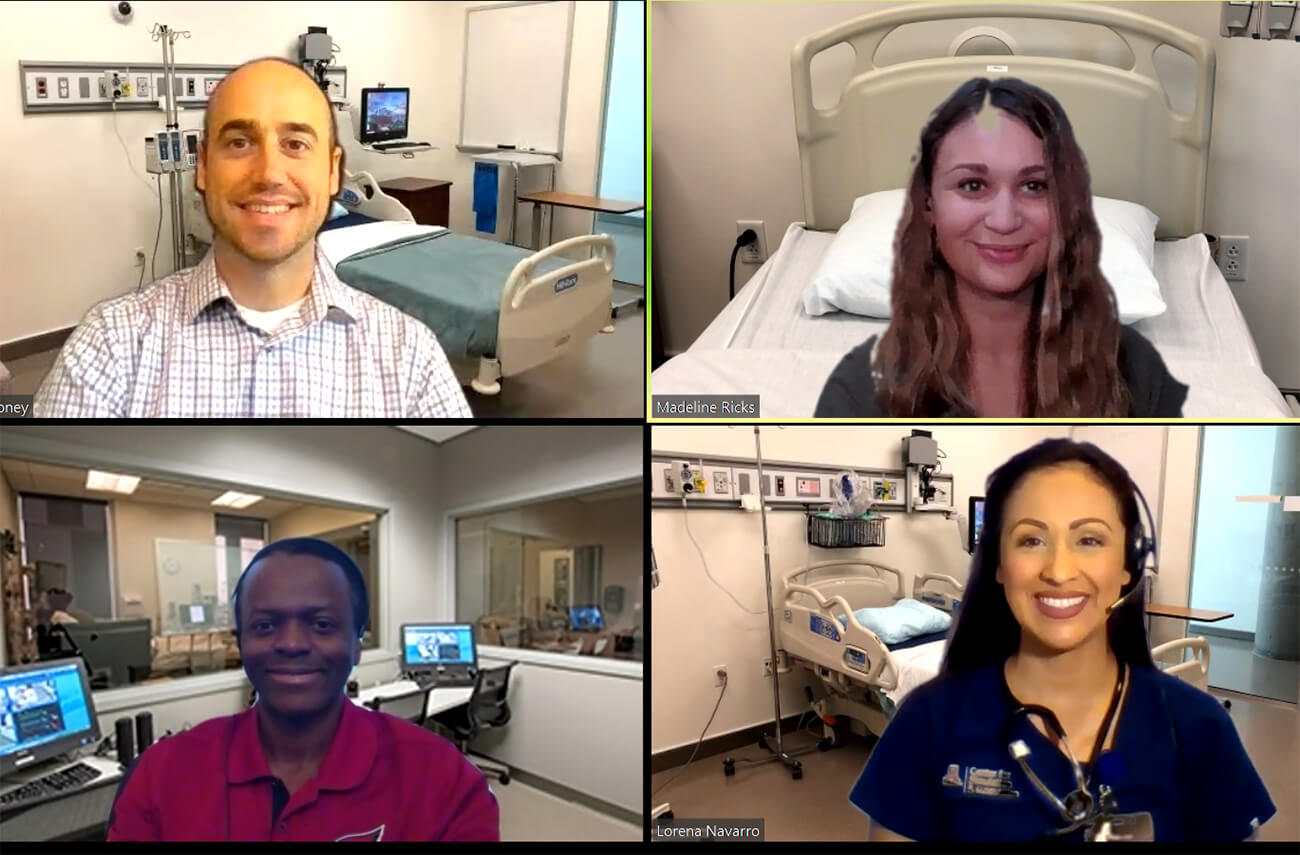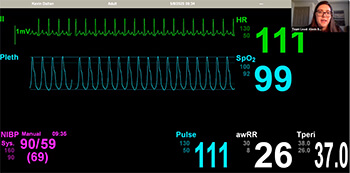
Medical Students Pivot to Virtual Patient Simulations

The University of Arizona College of Medicine – Phoenix is no stranger to innovation. Whether it be inspiring the minds of the next generation of physicians or conducting groundbreaking research for future treatments, the medical school has been at the forefront of the health care industry and continues to demonstrate pioneering efforts in educating future medical professionals. One such effort comes out of the Center for Simulation and Innovation.
The Sim Center, as it is commonly referred to on the Phoenix Biomedical Campus, is a 33,000 square foot clinical simulation training facility that is utilized throughout the four years of a student’s medical education. While simulation training is not unique to U of A, the Sim Center itself is one of the largest simulation facilities housed within a university in the U.S. and provides tens of thousands of experiential learning hours through immersive hands-on training.
For years, medical students at the College of Medicine – Phoenix have been accustomed to in-person simulations in which various health care scenarios are played out using state-of-the-art technologies. A key element of the Sim Center’s allure is the use of technologically driven mannequins that can speak, yell, sweat and bleed at the technician’s and instructor’s discretion. It is this innovative feature that creates a realistic clinical environment in which students must adapt at any given moment to any unforeseen health care situation. Through simulation practice and repetition, a student’s knowledge is solidified as they navigate through their coursework.
However, due to the COVID-19 pandemic, the Sim Center has been forced to modernize and adopt new platforms to reach their students who are hunkered down in their homes.

While most areas of a student’s simulation coursework have altered to accommodate for physical distancing protocols, other positive aspects have emerged from this shift. Students are now training with real life individuals as opposed to mannequins, which can improve the ability to observe a patient’s immediate emotional response. Other positive aspects include real-time chat features and the capability to record and replay a certain portion of a simulation for training purposes.
“Our Neurology clerkship recently conducted a ‘virtual simulation’ in which the faculty and a staff member, acting as a patient, had the students participating via Zoom to diagnose and manage a patient having a stroke in real-time,” said Steven A. Lieberman, MD, senior associate dean of academic affairs.
Converting the medical school’s curriculum to an entirely online presence was a college-wide endeavor and took only 36 hours for the implementation. This swift turnaround demonstrates the medical school’s ability to innovate at a moment’s notice. The Sim Center’s involvement in this implementation is a critical component to adhering to mandatory curricular requirements set by the American Association of Medical Colleges.
As the world health care industry patiently awaits a promising vaccine to combat the novel coronavirus, the University of Arizona College of Medicine – Phoenix and the Center for Simulation and Innovation remain steadfast in their strategic initiatives to instruct the next generation of physicians at the highest level.
Topics
About the College
Founded in 2007, the University of Arizona College of Medicine – Phoenix inspires and trains exemplary physicians, scientists and leaders to advance its core missions in education, research, clinical care and service to communities across Arizona. The college’s strength lies in our collaborations and partnerships with clinical affiliates, community organizations and industry sponsors. With our primary affiliate, Banner Health, we are recognized as the premier academic medical center in Phoenix. As an anchor institution of the Phoenix Bioscience Core, the college is home to signature research programs in neurosciences, cardiopulmonary diseases, immunology, informatics and metabolism. These focus areas uniquely position us to drive biomedical research and bolster economic development in the region.
As an urban institution with strong roots in rural and tribal health, the college has graduated more than 1,000 physicians and matriculates 130 students each year. Greater than 60% of matriculating students are from Arizona and many continue training at our GME sponsored residency programs, ultimately pursuing local academic and community-based opportunities. While our traditional four-year program continues to thrive, we will launch our recently approved accelerated three-year medical student curriculum with exclusive focus on primary care. This program is designed to further enhance workforce retention needs across Arizona.
The college has embarked on our strategic plan for 2025 to 2030. Learn more.